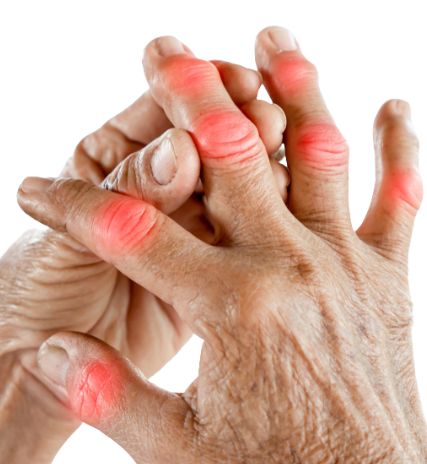TRIGGER FINGER
About Trigger Finger & Trigger Thumb
Trigger finger or trigger thumb occurs when your fingers or thumb get stuck in a bent position – like you’re squeezing a trigger. People with trigger fingers or trigger thumb may feel stiff when bending their fingers or hear snapping or popping noises when moving their fingers. According to statistics, 2 out of 100 people suffer from trigger finger, which is more common in women aged 40 and older with diabetic conditions.

What Causes Trigger Finger
Trigger finger or trigger thumb are most commonly found in:
- Housewives, Cooks
- Cleaners who experience repetitive strain on their fingers
- Manual labourers such as Industrial workers
- People with osteoarthritis, gout or diabetes
- People between the ages of 45 and 60
Symptoms Of Trigger Finger and Trigger Thumb
INABILITY TO GRIP OBJECTS OR CLOSE THE HAND FULLY
Trigger Fingers can cause the finger to be locked in a bent position, closing the hand is difficult as the fingers are unable to move. Opening the hand or straightening the fingers may also lead to a similar discomfort and difficulty. The affected finger/thumb will not be able to fully extend or straighten when opening the hand.
FINGER POPS
The finger pops when the fists are clenched, some describe it as a clicking sensation as you move your finger.
PAIN AND STIFFNESS
The patient will have difficulty bending the finger(s) or thumb. There is difficulty in clenching hands/fingers – inability to close it fully.
SWELLING
There may be some swelling or tender lump in the palm of the hand.
When Should I Seek Medical Attention?
A Message About Trigger Finger
Trigger finger if treated early, can achieve full recovery with simple injection treatment. Myospan treatment using a mix of local anaesthetic, anti-inflammatory and muscle relaxant will provide almost immediate effective pain relief. Combined with physiotherapy, and stretching exercises, this condition can be prevented from recurrence.
If left untreated, the pain will progress to form a nodule – a painful lump of the inflamed tendon. That will be harder to treat and may need surgical excision of the nodule.
Diagnosing Trigger Finger & Trigger Thumb
Here at Singapore Paincare, our team of experienced primary care physicians and/or pain care specialists together with a hand surgeon will conduct a thorough diagnosis. This includes a physical exam, questions about your symptoms, and an evaluation of your medical history. The severity of your Trigger Finger will be categorized into 4 different grades based on your finger mobility and function.
What Treatments are Available for Trigger Finger & Trigger Thumb?
At Singapore Paincare, we strive to treat your pain with the least invasive option possible after accurately identifying the cause. Our approach to pain resolution focuses on the removal of pain generators via specialised injection and minimally invasive procedures. Combined with pharmacological treatments and cognitive and physical rehabilitative therapies, we help patients improve functions and prevent pain from recurring.
Non-Surgical Treatment for Trigger Finger & Trigger Thumb
SPLINTING
Splinting may be used to reduce inflammation and allow recovery. These splints can be used for a period of six to ten weeks
STEROID INJECTION
A steroid injection may be used by our medical specialists to treat inflammation. It is a form of anti-inflammatory which can be used to relieve pain quickly. This simple intervention provides immediate relief without significant risks. It is less effective when taken orally. It is advisable to inject only three times a year to prevent tendons and bones from becoming weak.
Surgical Treatment for Trigger Finger & Trigger Thumb
TRIGGER FINGER RELEASE SURGERY
During this procedure, the A1 pulley is released which allows the flexor tendon to glide more easily through the tendon sheath. The procedure is typically performed as an outpatient procedure using local anaesthesia to numb the area. Patients are likely able to return the same day after a period of supervision.
Remedies for Trigger Finger
As an initial reactive measure, let the injured finger rest and try not to move it so the inflammation may slowly disappear. Patients can also take anti-inflammatory painkillers. If the inflammation is not severe and not very painful.
During the recovery process, it is best to avoid re-injuring the inflamed tendon: not holding things tightly and not using tools or performing hand movements that need gripping actions would be beneficial.
If the fingers are stiff at night and pain is felt in the morning when straightening the fingers, it may be helpful to use a nightly splint to keep the fingers straight before going to bed.
Lastly, place a cold compress on the affected area and slowly stretch the affected fingers to speed up the healing.






